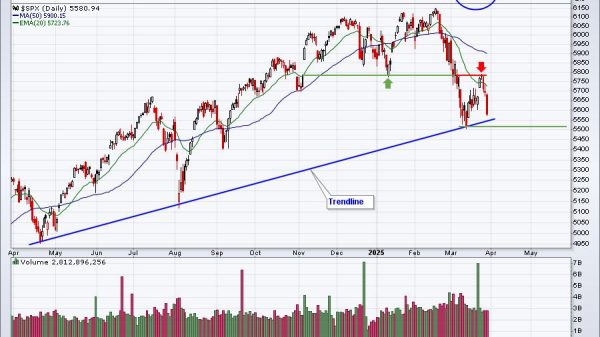On June 10, the House Financial Services Committee and the House Committee on Agriculture will hold markups on the “Digital Asset Market Clarity Act of 2025,” aka the “CLARITY Act.” Consideration of this bill has been a sprint, with a discussion draft released just over a month ago and the bill introduced with bipartisan cosponsors less than two weeks ago. Congress is endeavoring to meet the White House’s goal of getting both crypto market structure and stablecoin legislation to President Trump’s desk by August.
The CLARITY Act aims to create a clear regulatory framework for crypto and builds on the work that the House of Representatives did last year in passing FIT21. But the CLARITY Act isn’t a carbon copy of FIT21, as it presents a different vision for the relationship between the Securities and Exchange Commission (SEC) and Commodity Futures Trading Commission (CFTC) and a revised framework for determining when the securities laws apply, among other changes.
It’s good that Congress continues to engage with designing a crypto regulatory framework. For too long, and particularly under the last administration, the crypto industry has been hobbled by a hostile regulatory environment that has subjected market participants to extreme regulatory and compliance risk. As a result, crypto innovators have been increasingly looking outside of the US to jurisdictions that provide more stable and practical paths to regulatory compliance.
Legislative solutions can put an end to the difficulties of trying to square securities laws designed for financial intermediaries with a crypto ecosystem that includes tokens generated by decentralized networks and traded via disintermediated protocols. Moreover, legislative solutions can provide important protections that ensure the ability of individuals to develop software without inappropriate financial regulatory obligations and to protect the rights of individuals to engage in peer-to-peer transactions without the use of an intermediary.
Any good piece of crypto market structure legislation must tackle the following four tasks to create a stable framework that allows crypto innovation to compete in the US marketplace: defining SEC jurisdiction, carving out DeFi, protecting self-custody, and solving centralized trading.
How does the CLARITY Act stack up?
1. Crypto market structure legislation must define the jurisdiction of the SEC.
One of the biggest sources of risk for the crypto industry has been the unclear jurisdiction of the SEC, which allowed the agency to spend years unleashing a reign of terror under which the agency viewed practically every digital asset (and digital asset-related service) as subject to the securities laws. While the current SEC has begun the process of drawing clearer lines around its own jurisdiction, such agency interpretations are, by their very nature, impermanent; clear, lasting boundaries of agency jurisdiction must come from Congress.
The CLARITY Act addresses this question head on. It draws a line between investment contracts and tokens, separating a token sold pursuant to an investment contract from the investment contract itself. The tokens themselves are, subject to the definition in the bill, digital commodities, which are overseen by the CFTC. The investment contracts pursuant to which such tokens are sold remain under the SEC’s jurisdiction. But the CLARITY Act creates an exemption that digital commodity issuers could rely on to offer such investment contracts. That exemption hinges on the issuer’s disclosure of crypto-specific information, including the source code for the blockchain system and information about the offering’s “tokenomics.” What the requirements look like depend on whether the blockchain system to which the token relates is “mature.” A mature blockchain system is one that is not “controlled by any person or group of persons under common control.”
This framework is an evolution of the one in FIT21, which depended on whether the project was “decentralized.” There are many heady discussions to be had about the overlap between decentralization and control, but they both draw from the same basic principle about when the protections of the securities laws make sense. The securities laws evolved in no small part to address the risks posed to investors by a managerial body’s ability to possess information that investors do not have and that body’s capacity to act at odds with investors’ best interests. Where there is no individual or entity in such a position, the protections afforded by the securities laws are inapposite and should not be applied. The CLARITY Act recognizes this by providing a tailored, crypto-specific disclosure regime for projects that are in the process of maturing and phases out the SEC’s involvement where the project is no longer so situated.
2. Crypto market structure legislation must carve out decentralized finance activities.
Decentralized finance—or DeFi—is an umbrella term for financial software that operates without traditional financial intermediaries. Think lending without a bank or trading without a brokerage. DeFi enables peer-to-peer transactions but without the need for individuals to be acquainted.
At a high level, financial marketplace laws are designed to address the “intermediary risks” posed by financial middlemen. These risks relate to custody (do intermediaries safeguard customer assets), market transparency (are transactions and trading practices publicly legible), and market manipulation (do unfaithful agents or fraudulent and deceptive practices harm market participants). Decentralized exchanges made of self-executing software programs do not pose the same classic intermediary risks, as they do not custody customers’ assets and are transparent by design. While DeFi is not risk free, the risks of managers committing fraud are different from the risks of computer code containing bugs, and laws ought to treat them differently.
While the CLARITY Act doesn’t explicitly buy into this view of DeFi’s risk profile, it nevertheless excludes from the requirements of the act “decentralized finance activities,” including many administrative functions such as compiling network transactions, providing computational work, and developing software. The CLARITY Act, however, does not exclude such DeFi activities from the SEC’s and CFTC’s anti-fraud and anti-manipulation authorities. And it also orders a study on decentralized finance to analyze the use of DeFi protocols and the risks of DeFi integration with traditional financial markets, leaving open the door to future regulation of DeFi or DeFi-adjacent activities.
3. Crypto market structure legislation must protect self-custody of digital assets.
While the ability to control one’s own digital assets is a fundamental requirement to engage in DeFi, carving out DeFi from the CLARITY Act’s provisions does not itself explicitly protect self-custody. Conceptually, noncustodial (or unhosted) wallets most closely resemble physical wallets holding cash or any other means of maintaining custody of an asset. Fundamentally, a noncustodial crypto wallet is a tool for safeguarding the credentials (private keys) for accessing a user’s own crypto holdings. Protecting self-custody is fundamental to the ability of individuals to participate in a digital economy with respect for privacy and individual choice about with whom to transact.
The CLARITY Act includes explicit protections for self-custody by individuals, granting the right to maintain a wallet for the purpose of “facilitating lawful custody of digital assets” and engaging in “direct, peer-to-peer transactions in digital assets.”
4. Crypto market structure legislation must solve the question of centralized trading of crypto commodities.
Finally, crypto market structure legislation must address centralized trading of crypto commodities. This question has been subject to a great deal of attention over the past several years as the CFTC has openly advocated for jurisdiction over crypto commodity exchanges. To overcome the chilling effect of unpredictable, impractical, and (at times) conflicting rules, lawmakers and regulators should provide a clear registration pathway for centralized crypto exchanges.
The CLARITY Act does this in large part by placing authority with the CFTC. Centralized crypto commodities exchanges must register with the CFTC and follow the rules that the CFTC puts in place for their operation. The bill also gives the CFTC anti-fraud and anti-manipulation authority over cash or spot transactions in digital commodities. SEC registered entities may engage in digital commodity trading activity subject to a streamlined registration procedure with the CFTC and subject to SEC regulations. This approach does not implement a light-touch disclosure-based framework for CFTC supervision of crypto commodities exchanges; indeed, the CLARITY Act’s provision registration provisions are closer to this ideal. But the CLARITY Act’s design does have the potential to minimize the regulatory uncertainty that currently plagues centralized crypto exchanges. Importantly, the CLARITY Act’s design recognizes the potentially integrated nature of securities and commodities transactions in the crypto ecosystem and allows for both types of intermediaries to engage in crypto commodities transactions.
The Bottom Line
Beyond these four tasks for crypto market structure legislation, there’s room for additional improvement with the CLARITY Act. For example, the bill relies too heavily on grants of discretion to the agencies to act within the “public interest or for the protection of investors”—essentially limitless concepts. And in other places it gives too little direction to the agencies for regulations they are required to promulgate, such as delisting of assets from trading platforms. The less discretion granted to the agencies, the less opportunity for future agencies to subvert congressional intent to create a pro-innovation regulatory framework for digital assets.
But all in all, the CLARITY Act is focused on many of the right questions. There’s still a long road before any crypto market legislation becomes law—notwithstanding the White House’s August deadline. That leaves plenty of room to improve upon a piece of legislation that looks to have its eye on the prize of a rational and stable crypto regulatory framework.















